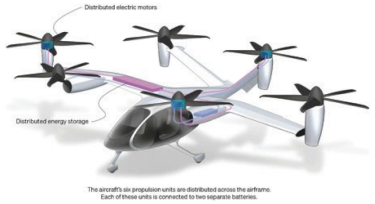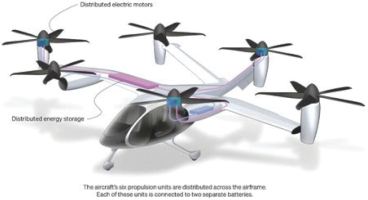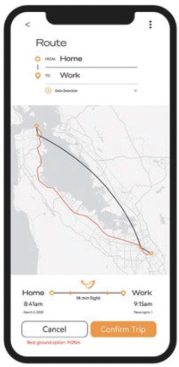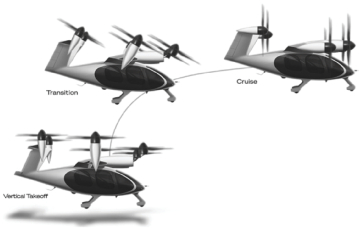energy and transportation solutions. The success of electric ground vehicles have fueled continued investments in improving these technologies. Battery energy densities, in particular, have improved enough that application to aviation is now practical.
We expect the electrification of transportation to accelerate and extend to the skies in the decade ahead, representing a place where technology, economy, and sustainability converge. Applying electrification to small aircraft unlocks new degrees of freedom in design that were not possible with traditional, combustion engines. Using multiple small electric motors (which has been called “distributed electric propulsion”) rather than a single central engine enables a new class of quiet, safe, and economical vertical takeoff and landing aircraft that were previously infeasible.

The low noise, operating costs and carbon emissions enabled by the all-electric powertrain, combined with the ability to take off and land vertically, unlocks aerial access to urban cores in ways not currently possible. We believe this will result in a new market for high-volume aerial mobility in and around cities and the suburban and rural communities that surround them. We believe this new solution will enable people to not just rethink how they get around on a daily basis, but also provide greater freedom to choose where they call home relative to the economic, cultural, and social opportunities that have historically drawn people together.
Our Business Strategy
Our Aerial Ridesharing Service
We intend to build an aerial ridesharing service powered by a network of eVTOL aircraft that we will manufacture and operate. We plan to develop an
app-based
platform that will permit consumers to directly book rides through our service. We will also integrate access to our service into leading third-party demand aggregation platforms, including through our partnership with Uber. Whether our service is accessed through our own platform, or through a partner app like Uber, we will tightly integrate ground transportation providers for the first and last mile with our aerial service, providing a seamless travel experience. We believe that our
app-based
aerial ridesharing service will be fast, convenient, comfortable, environmentally sustainable, and, over time, progressively more affordable. By maintaining full control over the design, development, test, manufacture, and operations of our aircraft, we intend to deliver a service that is optimized from beginning to end, positioning us to be the leading company in this market. 2



